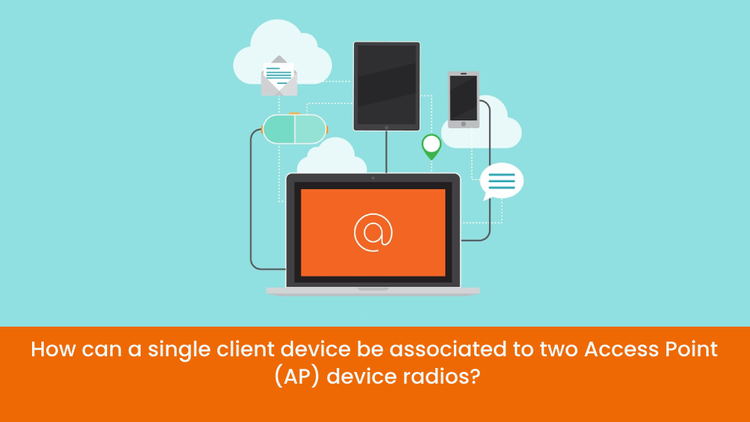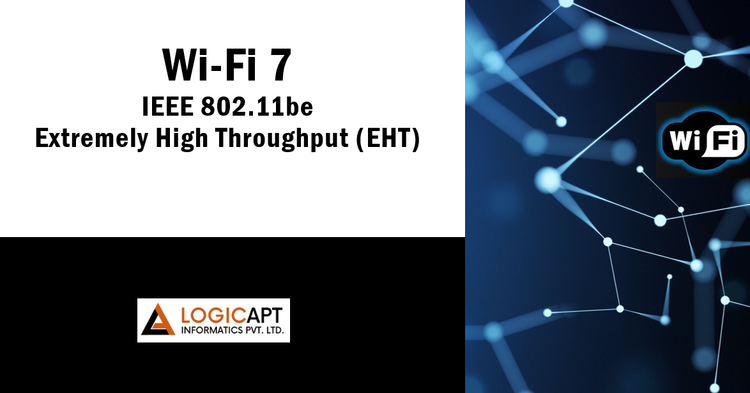WiFi 7 (IEEE 802.11be): Concepts & Definitions
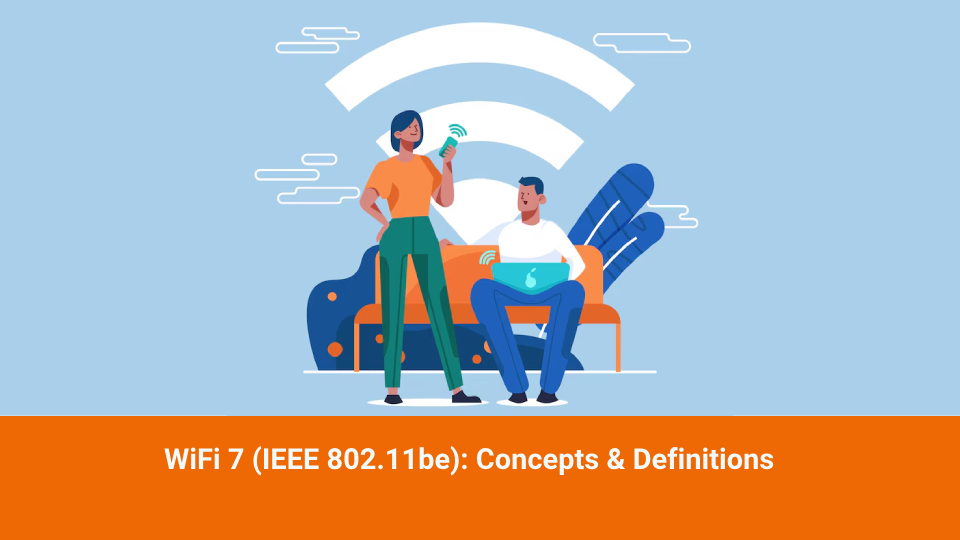
Before digging in deep let’s go through some IEEE 802.11 concepts & definitions.
The various concepts and terminology used at the IEEE 802.11 meetings and the related drafts/amendments/standards can be difficult to pick up (without reading the entire document archive). So, here we are going to give you the introduction about such concepts/terminologies used inherently in 802.11.
MAC Service Data Unit (MSDU):
Information sent as a single unit between MAC service access points is known as the MAC Service Data Unit.
Wireless Medium (WM):
The medium through which a wireless LAN is implemented.
Station (STA):
Any device with a MAC and PHY interface to the wireless medium that complies with 802.11 standards.
Access Point (AP):
The network side air interface is terminated by the AP (Access Point), which acts as the base station in a WLAN. They serve as a bridge connecting the wired world of Ethernet and the wireless world of 802.11. To guarantee that only traffic intended for a station is sent over the wireless medium, they may also serve as bridging devices. It is like any entity that has STA capabilities and allows access to the DS.
Basic Service Set (BSS):
An IEEE 802.11 LAN's fundamental building component is the basic service set (BSS). The group of stations that may communicate with one another within an 802.11 network is referred to as the Basic Service Set. Access Points (APs), which offer a connection to a fixed distribution system like an Ethernet network, may or may not be part of the BSS. There are two kinds of BSS: Infrastructure Basic Service Set and Independent Basic Service Set (IBSS). The figure below shows two BSSs, each of which has two stations which are members of the BSS. If a station moves out of its BSS, it can no longer communicate with other members of the BSS.
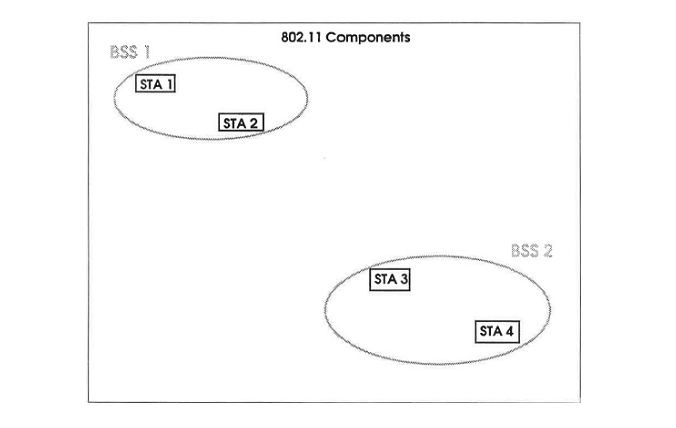
Extended Service Set (ESS):
One or more linked WLANs that are incorporated into LANs and show up to the logical link control layer as a single BSS are referred to as an Extended Service Set (ESS). Depending on signal strength and traffic criteria, clients or stations can move between various access points within the ESS.
Service Set Identifier (SSID):
The Service Set Identifier, often known as the Network Name, is used to identify specific IEEE 802.11 networks. It is often defined by the administrator who configures the WLAN (Wireless Local Area Network) and will be unique inside a BSS (Basic Service defined) or ESS (Extended Service Set). The SSID may be broadcast by an AP (Access Point) within the wireless network so that Stations may determine which network to associate with.
Basic Service Set Identifier (BSSID):
A specific BSS (Basic Service Set) within a region can be identified by its 48-bit BSSID. In ad hoc or independent BSS networks, the BSSID is created at random, but in infrastructure BSS networks, it is the MAC (Medium Access Control) address of the access point (AP).
Basic Service Area (BSA):
The area wherein the BSS's members can communicate.
Extended Service Area (ESA):
An area where an ESS's members can communicate. An ESA is equal to or greater than an BSA.
Coordination function (CF):
This logical function defines whether a station in a BSS transmits and receives via the WM.
Distributed Coordination function (DCF):
A class of potential CFs in which each STA always has the same CF logic active.
Distribution System (DS):
A system for establishing an ESS by connecting a group of BSSs.
Distribution System Services (DSS):
The collection of DS services that allow the MAC to move MSDUs between BSSs inside an ESS.
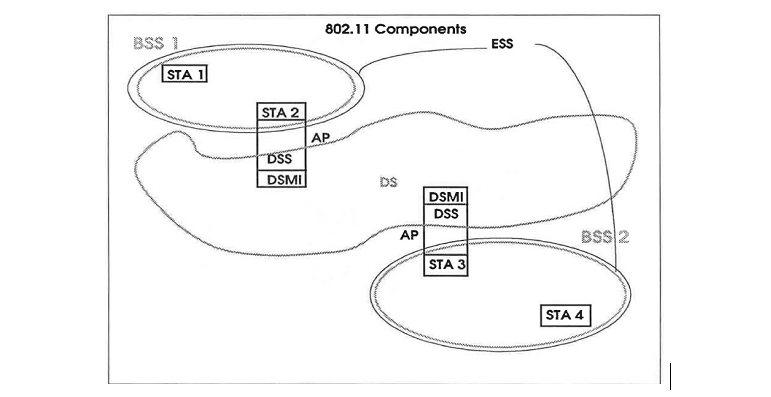
DSMI:
It stands for Distribution Systems Medium Interface.
Multi-link device (MLD):
A logical entity with a single MAC data service and a single MAC SAP to LLC sublayer that can support one or more affiliated STAs.
AP MLD:
An MLD, where each STA affiliated with the MLD is an AP.
Affiliated AP:
An affiliated station (STA) that is an access point (AP) STA and the corresponding multi-link device (MLD) is an AP MLD.
Affiliated non-AP STA:
An affiliated station (STA) that is a non-access point (non-AP) STA and the corresponding multi-link device (MLD) is a non-AP MLD.
Affiliated STA:
A station (STA), which can be an access point (AP) STA or non-access point (non-AP) STA, that provides link-specific, lower medium access control (MAC) and physical layer (PHY) services within a multi-link device (an MLD).
Non-AP MLD:
An MLD, where each STA affiliated with the MLD is a non-AP STA.
Association:
The service used to establish a mapping between an access point (AP) or personal basic service set (PBSS) control point (PCP), and a station (STA) and enable STA invocation of the distribution system services (DSSs) or to establish a mapping between an access point (AP) multi-link device (MLD) and a non-AP MLD and enable non-AP MLD invocation of the DSSs. [from 802.11be draft]
Authentication:
The service used to establish the identity of one station (STA) as a member of the set of STAs authorized to associate with another STA or to establish the identify of one multi-link device (MLD) as a member of the set of MLDs authorized to associate with another MLD.
Basic service set (BSS) transition:
Movement of an association by a station (STA) or non-AP multi-link device (MLD) from one BSS or AP MLD to another BSS or AP MLD in the same extended service set (ESS) that might involve changing operating mode from STA to MLD, or vice versa.
Fast basic service set (BSS) transition:
A BSS transition that minimizes the amount of time that data connectivity to the distribution system (DS) is lost.
Service set transition:
A change of association that is either a basic service set (BSS) transition or an extended service set (ESS) transition.
Resource unit (RU):
An OFDMA mode was included in Wi-Fi 6 that aggregates small frames from several STAs into the same multiuser transmission. A resource unit, or a single, narrowed chunk of the channel bandwidth, would be allotted to each STA. A group of 26, 52, 106, 242, 484, 996, 2x996, or 4x996 subcarriers as an allocation of subcarriers for transmission.
Orthogonal Frequency Division Multiplexing (OFDM):
It is a digital multi-carrier modulation system that builds on the notion of single subcarrier modulation by employing several subcarriers inside a single channel. Instead of transmitting a high-rate stream of data with a single subcarrier, OFDM employs a large number of closely spaced orthogonal subcarriers that are broadcast concurrently. At a low symbol rate, each subcarrier is modulated using a normal digital modulation method (such as QPSK, 16QAM, and so on).
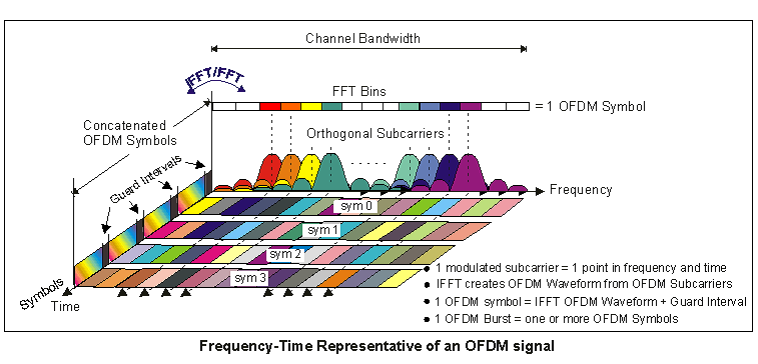
Orthogonal Frequency Division Multiple Access (OFDMA):
OFDMA (Orthogonal Frequency Division Multiple Access) is an advanced form of channelization. However, unlike OFDM sub-channelization, which is semi-static, OFDMA allows for a more dynamic way to allocate resources. As a result, OFDMA will assign a number of subcarriers for different symbol periods dependent on network conditions and user requirements. This allows for greater exploitation of the available bandwidth while decreasing waste.
Orthogonal Frequency Division Multiple Access (OFDMA) was first proposed to the Study Group for 802.11ac and later revised and adopted by 802.11ax.
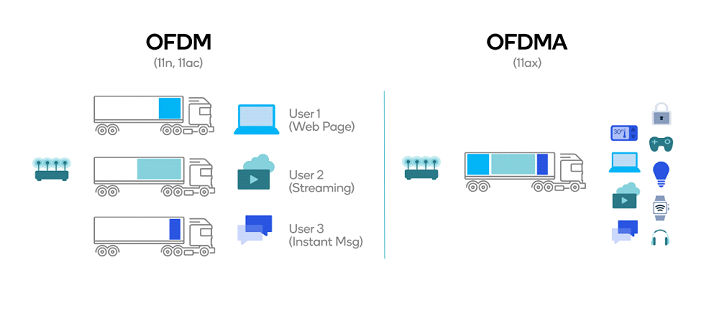
Multiple Input Multiple Output (MIMO):
Enhancing the spectral efficiency and dependability of radio communication has become necessary due to the growing need for faster data rates and better quality of service (QoS) via wireless networks. Using many antennas at either end of the transmission link is one method to do this. MIMO is a term of this technique.
Single User–MIMO (SU-MIMO):
MIMO refers to the data transmission method. As the name implies, SU-MIMO maximizes the data rate by scheduling a single user. SU-MIMO (Single-User MIMO) is the term for MIMO SDM (Spatial division multiplexing) of multiple modulation symbol streams to a single UE using the same time/frequency resource.
Multiple User–MIMO (MU-MIMO):
Multi-user, multiple input, multiple output, or MU-MIMO, is a wireless technology that enhances overall efficiency by enabling a single access point to communicate with several devices at once. The Wi-Fi 5 (802.11ac) Wave 2 standard included MU-MIMO, albeit it was only supported for downlink connections.
Hang on for a bit!! There is more to it in the next blog of this series. See you there!!!!!
Sources:
- https://www.sciencedirect.com/topics/computer-science/extended-service-set
- https://helpfiles.keysight.com/csg/89600B/Webhelp/Subsystems/wlan-ofdm/content/ofdm_basicprinciplesoverview.htm
- https://www.mpirical.com/glossary/ofdma-orthogonal-frequency-division-multiple-access
- https://mentor.ieee.org/802.11/
- IEEE 802.11 Wireless LAN Working Group
- https://www.cisco.com/c/en_in/products/wireless/what-is-wifi.html
- Wi-Fi 7 in Depth: Your Guide to Mastering Wi-Fi 7, the 802.11be Protocol, and Their Deployment, Jerome Henry, Brian Hart, Binita Gupta, Malcolm Smith, Pearson Education, 2024.
- https://www.qualcomm.com/content/dam/qcomm-martech/dm-assets/documents/ofdma_white_paper.pdf

